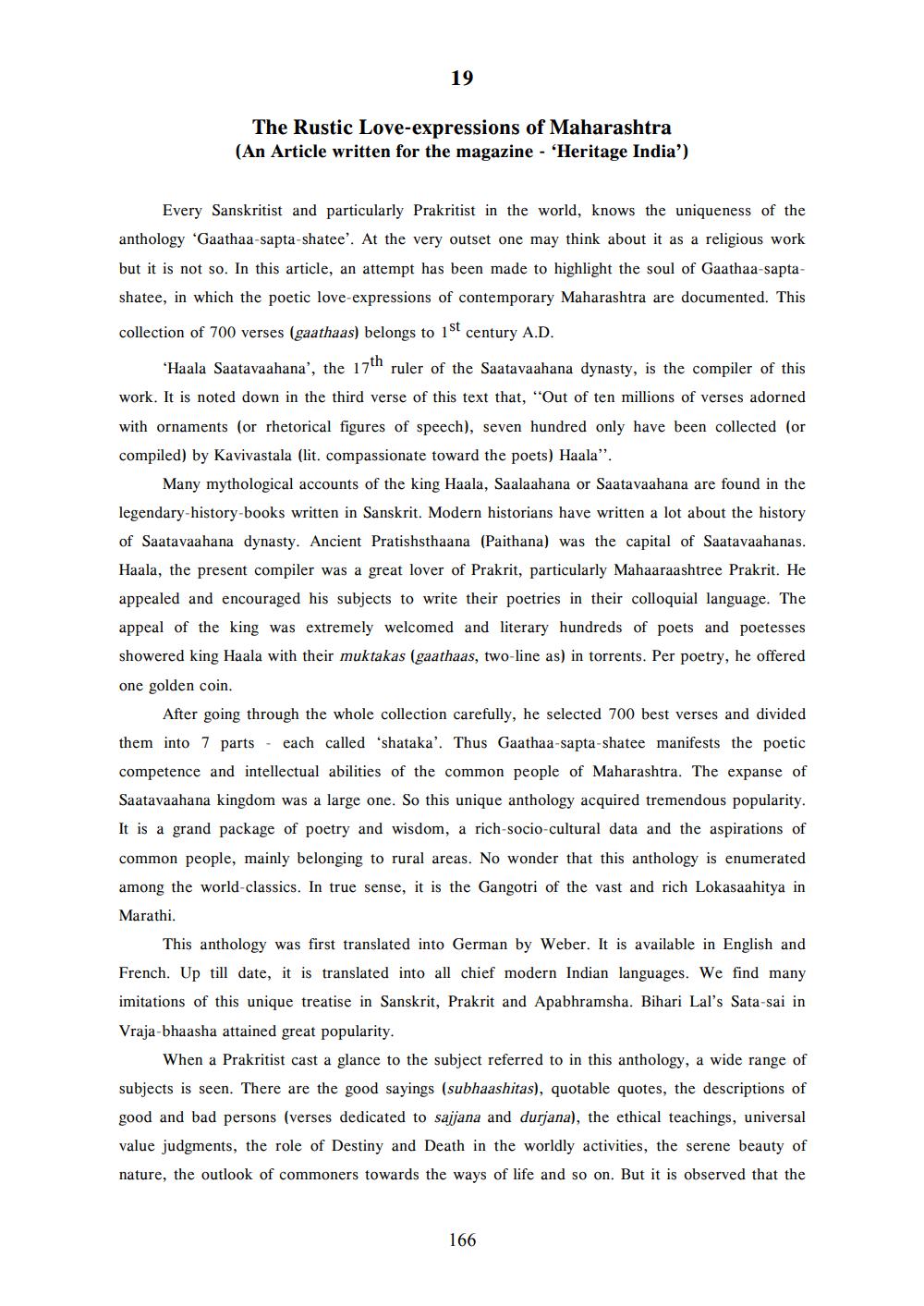________________
19
The Rustic Love-expressions of Maharashtra (An Article written for the magazine - 'Heritage India')
Every Sanskritist and particularly Prakritist in the world, knows the uniqueness of the anthology 'Gaathaa-sapta-shatee'. At the very outset one may think about it as a religious work but it is not so. In this article, an attempt has been made to highlight the soul of Gaathaa-saptashatee, in which the poetic love-expressions of contemporary Maharashtra are documented. This
collection of 700 verses (gaathaas) belongs to 1st century A.D.
"Haala Saatavahana', the 17th ruler of the Saatavaahana dynasty, is the compiler of this work. It is noted down in the third verse of this text that, "Out of ten millions of verses adorned with ornaments (or rhetorical figures of speech), seven hundred only have been collected (or compiled) by Kavivastala (lit. compassionate toward the poets) Haala".
Many mythological accounts of the king Haala, Saalaahana or Saatavaahana are found in the legendary-history-books written in Sanskrit. Modern historians have written a lot about the history of Saatavaahana dynasty. Ancient Pratishsthaana (Paithana) was the capital of Saatavaahanas. Haala, the present compiler was a great lover of Prakrit, particularly Mahaaraashtree Prakrit. He appealed and encouraged his subjects to write their poetries in their colloquial language. The appeal of the king was extremely welcomed and literary hundreds of poets and poetesses showered king Haala with their muktakas (gaathaas, two-line as) in torrents. Per poetry, he offered one golden coin
After going through the whole collection carefully, he selected 700 best verses and divided them into 7 parts - each called 'shataka'. Thus Gaathaa-sapta-shatee manifests the poetic
competence and intellectual abilities of the common people of Maharashtra. The expanse of
Saatavaahana kingdom was a large one. So this unique anthology acquired tremendous popularity. It is a grand package of poetry and wisdom, a rich-socio-cultural data and the aspirations of common people, mainly belonging to rural areas. No wonder that this anthology is enumerated among the world-classics. In true sense, it is the Gangotri of the vast and rich Lokasaahitya in Marathi.
This anthology was first translated into German by Weber. It is available in English and French. Up till date, it is translated into all chief modern Indian languages. We find many imitations of this unique treatise in Sanskrit, Prakrit and Apabhramsha. Bihari Lal's Sata-sai in Vraja-bhaasha attained great popularity.
When a Prakritist cast a glance to the subject referred to in this anthology, a wide range of subjects is seen. There are the good sayings (subhaashitas), quotable quotes, the descriptions of good and bad persons (verses dedicated to sajjana and durjana), the ethical teachings, universal value judgments, the role of Destiny and Death in the worldly activities, the serene beauty of nature, the outlook of commoners towards the ways of life and so on. But it is observed that the
166




